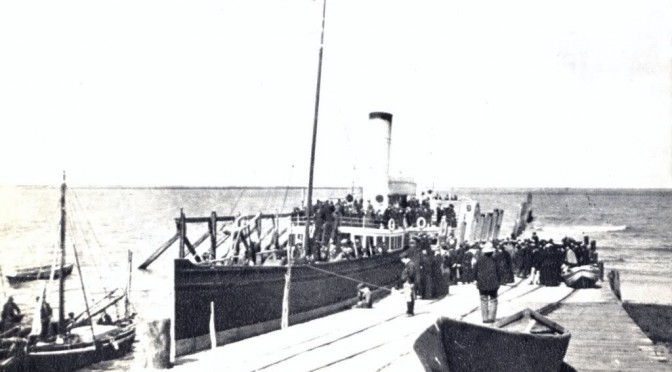(See aslo Shipping)
The Burnham Tidal Harbour & Railway Co. was part of scheme to take rail passengers from Wales and the North, via paddle steamer from Cardiff to Burnham, on to the South coast and then to France. To begin this project George Reed laid the foundation stone of the jetty in 1857, and construction was finished in 1858 in time for the opening of the railway.
The railway track ran on from the station to the end of the jetty at that time. The jetty’s down gradient of 1 in 23 required that rolling stock be lowered by wire ropes attached to an engine at the top of the jetty. The Burnham lifeboat also used these lines for launching.
On the opening day of the jetty the ‘Iron Duke’ from Cardiff landed at 10am, also 700 rail passengers arrived from Bristol. Cardiff passengers had difficulty getting back on the boat because the tide was out. This problem eventually necessitated tidal lakes (reservoirs) being built in the southern angle of the jetty and the sea front, to release seawater at low tide and to flush sand away from south side of the jetty for steamers to berth. Despite this flushing and employing people to dig out sand and mud from the ‘berthing gut’ (below) the problem was never effectively solved.
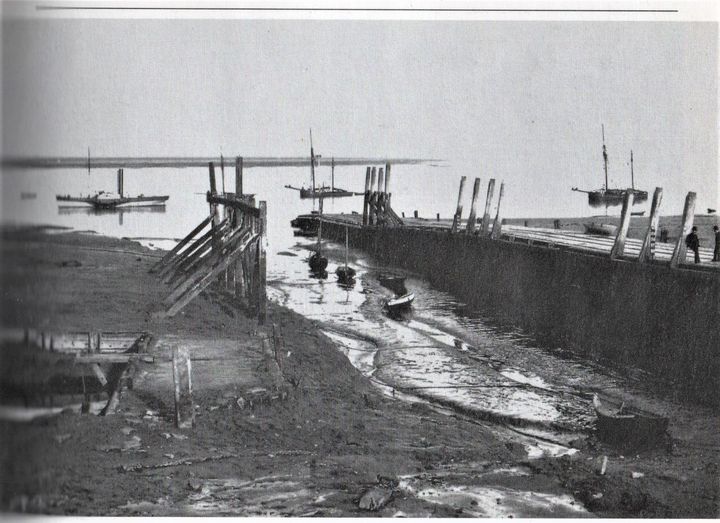
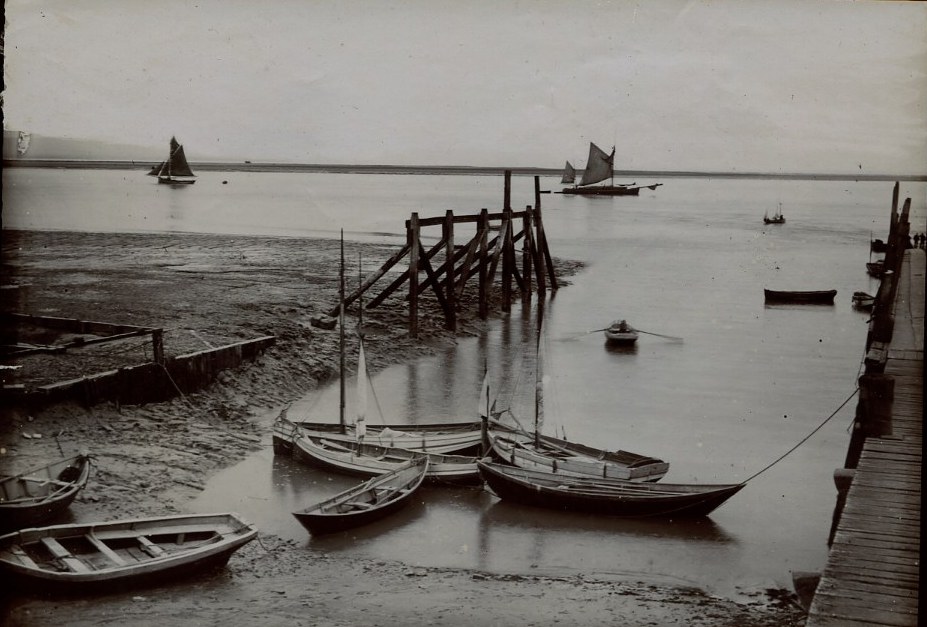
These works evidently led to some dispute in local government as reported in the Bridgwater Mercury in 1857. It appears that the objection was unsuccessful.
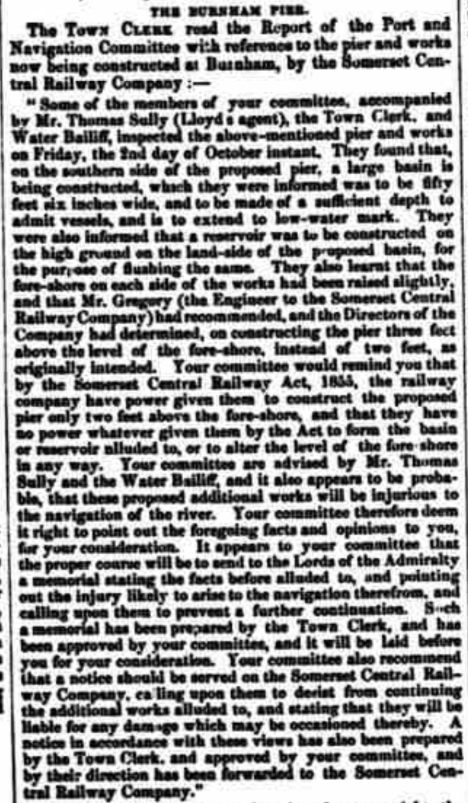
In 1860, a steamer service to Wales was inaugurated, to carry passengers, livestock and other goods, but it was never a commercial success, and ended in 1888 following the construction of the Severn railway tunnel in 1885.
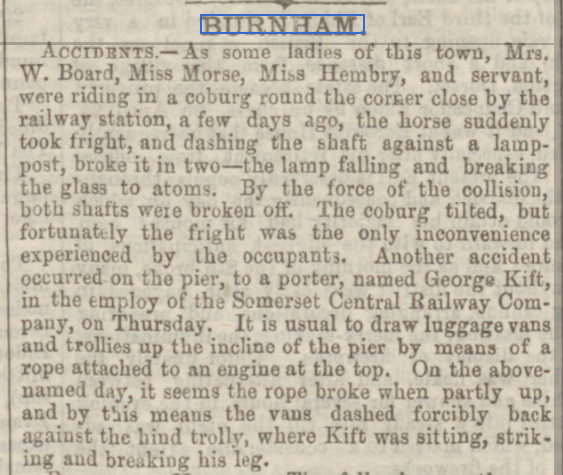
There is also evidence of a steamer service from Cork in Ireland. The Western Gazette and Flying Post of Friday 13th September 1867 reported:
‘On Monday last a new communication was opened between the south of Ireland, England and France, via Cork and Burnham. The new paddle steamer Courier made her first trip from Cork, starting from the place on Monday evening and arriving at Burnham about half-past two on Tuesday afternoon. The object of the company is to enable graziers and others to forward their goods to the London market in a much shorter space of time than by the old way between Cork and Bristol, the steamers on that line being often detained for some hours at the mouth of the Avon.’
On 7th February 1868 the same newspaper reported:
‘A large screw steamer, the Miranda, of 700 tons burden, arrived at the pier on Sunday morning last, from Spain, with a cargo of Spanish grass (500 tons) to be transferred by rail to its final destination, to be converted into paper. Vessels thus laden formerly put in at Cardiff docks, but this place is considered much nearer, and the ships will therefore regularly put in at this pier.’
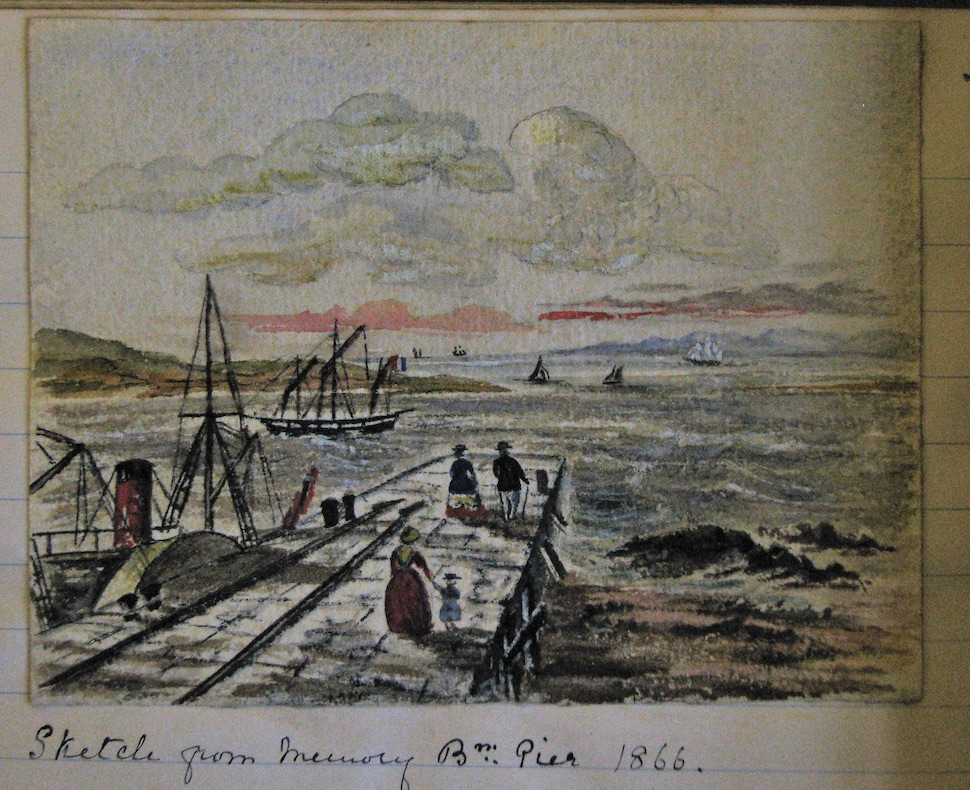
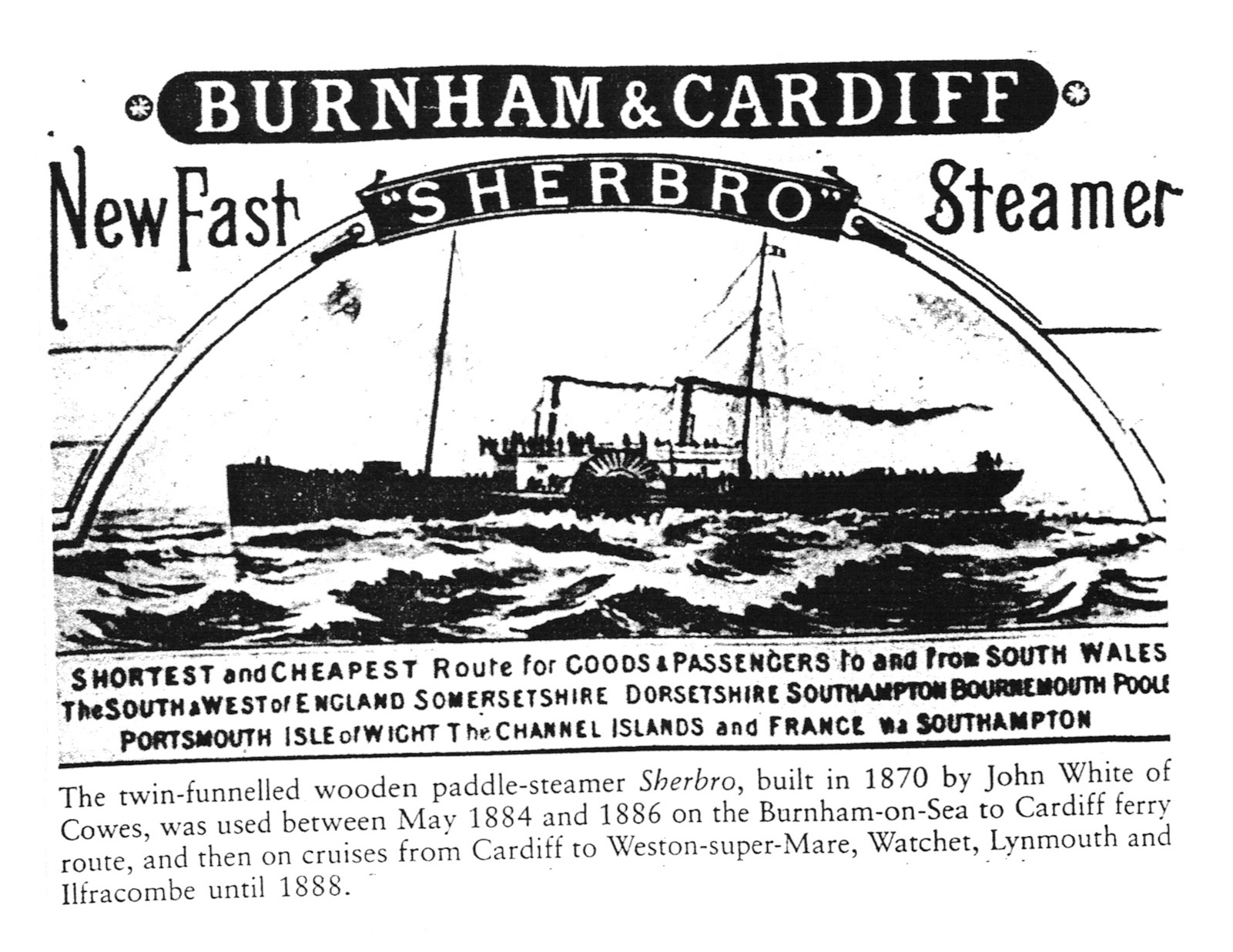 The Bristol Mercury Guide to Burnham of 1884 described the Cardiff steamer service and particularly the Sherbro which replaced the Lady Mary:
The Bristol Mercury Guide to Burnham of 1884 described the Cardiff steamer service and particularly the Sherbro which replaced the Lady Mary:
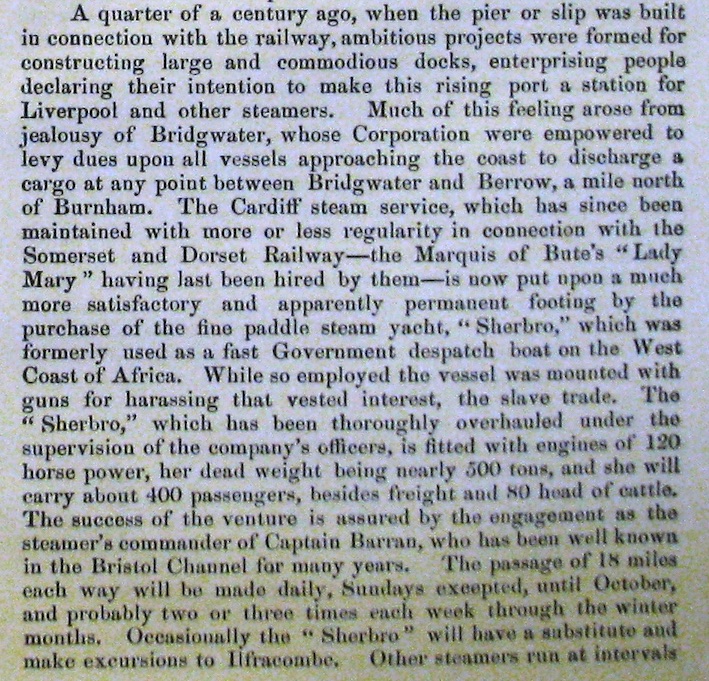
Pleasure steamer services to Cardiff, Ilfracombe and Bristol called at Burnham and operated until the early 1900s, some laid on for special events such as the annual regatta in 1891, but the accumulation of silt eventually rendered the jetty unsuitable for the service to continue.
1898 Report of a drowning by the jetty in the West of England Advertiser:

Over the years plans were made to improve the jetty. The drawing below may have been part of the upgrading proposals of the Burnham Tidal Harbour Co of the 1860’s.
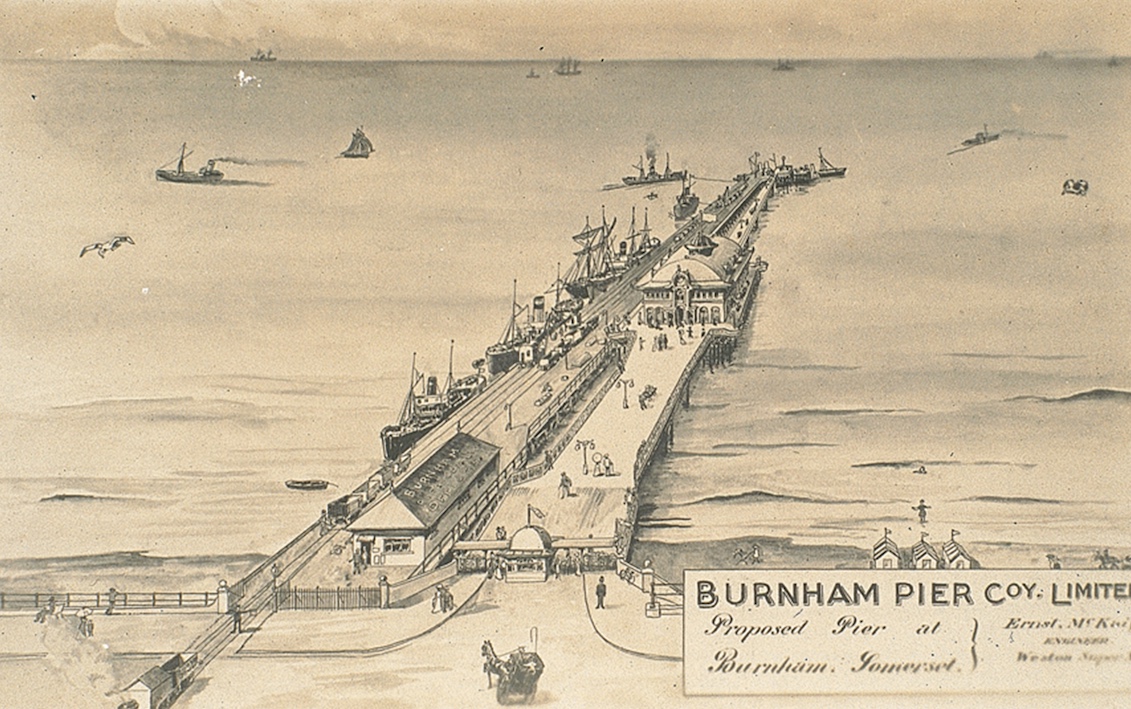
An offer to build a new jetty was made in 1905:
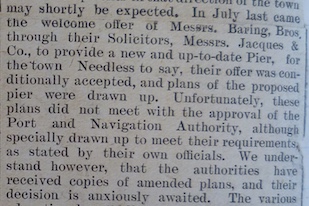
We do not know what happened to this plan but there is another reference to a new jetty being proposed in 1907 as part of an attempt by the town of Barry to revive the steamship link, this project also did not get off the ground. It is not clear whether this is the same scheme as 1905 or a different one. The next picture may relate to either of the above plans as it also appears in a 1906 local press report, though it is captioned in the picture below as pre-1900.
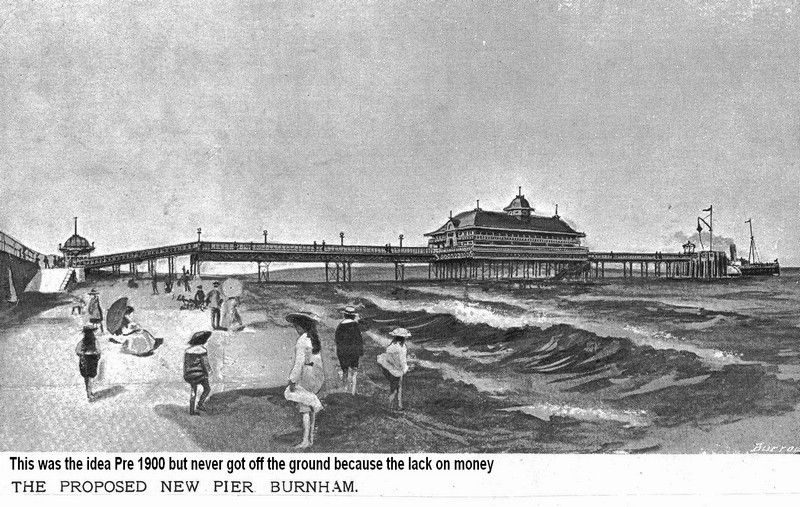
It appears that the idea was still being considered in 1930, as a description of a ‘Proposed new Pier’, which broadly matches the above picture, is found in the Burnham Holiday Guide for that year.
(Here is more information about the proposals for this new pier)
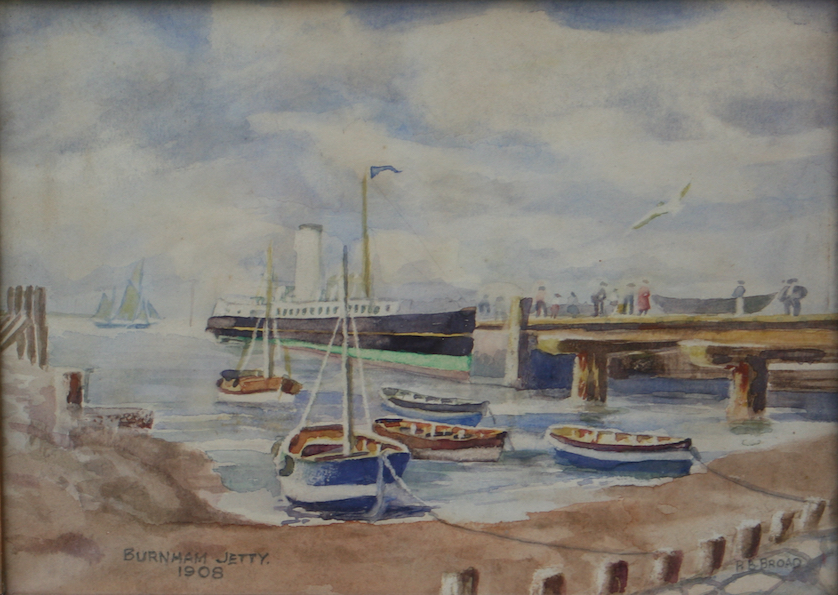
Below are two plans of proposed alterations to the jetty, the first from 1906, the second, showing a platform at the end and a slight shift northwards, from 1914, supplied by John Kerton.
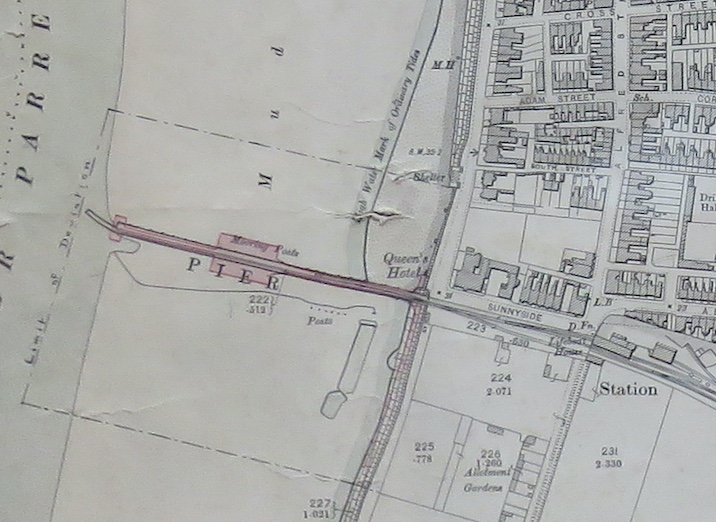
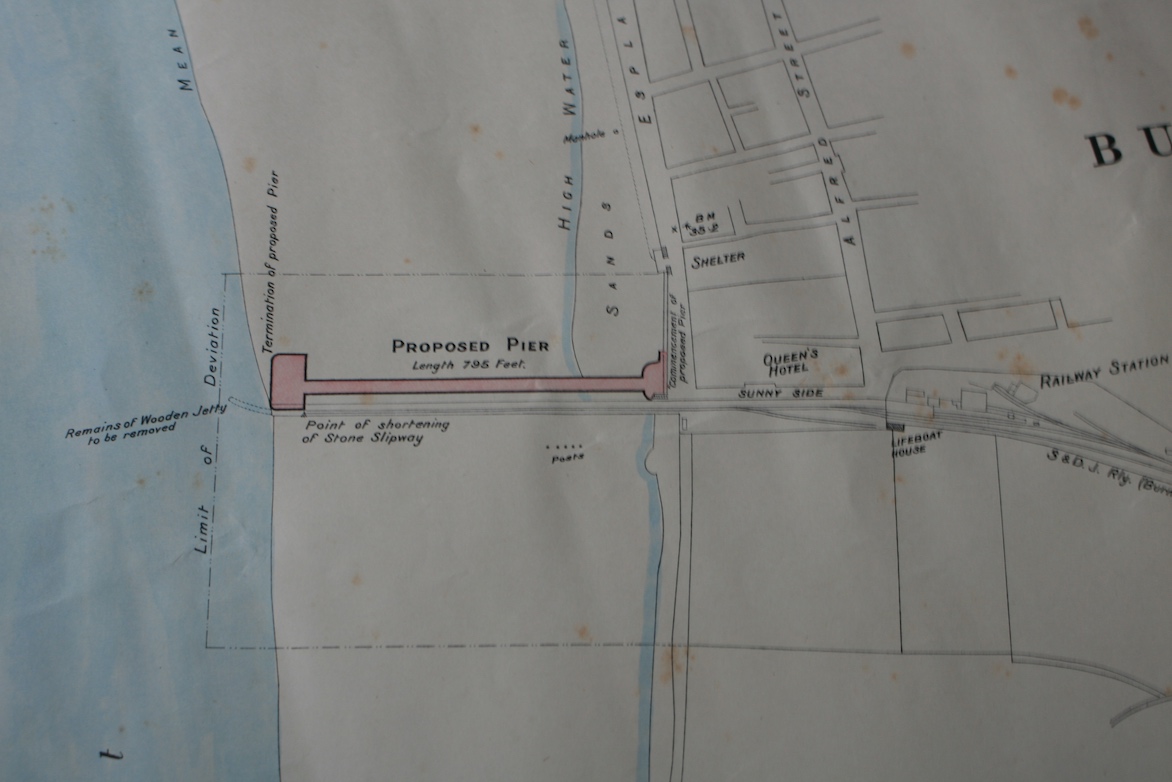
The jetty was railway company property until disposed of to the Burnham Urban District Council in1905. 1909 was the last occasion a steamer called at the jetty for the sole purpose of discharging and taking on passengers. However it was unable to come completely alongside because of the silt in the mooring channel so nosed in to the end of the jetty and passengers had to scramble over the bows. Later that year the mooring posts along the jetty were cut down level with the stonework. Thanks to Jack Luxon for information that the picture at the top of the page shows the ‘Waverley’ steamer in 1908 (source cited as a book by Chris Handley). This is not the same ‘Waverley’ as the one which has been operating in recent years. The little boy sitting on the jetty crying is Fred Wynn who’s father, the captain, had refused to take him on the trip around the bay.
The photos below clearly show the rails used for cargo and for launching the lifeboat. 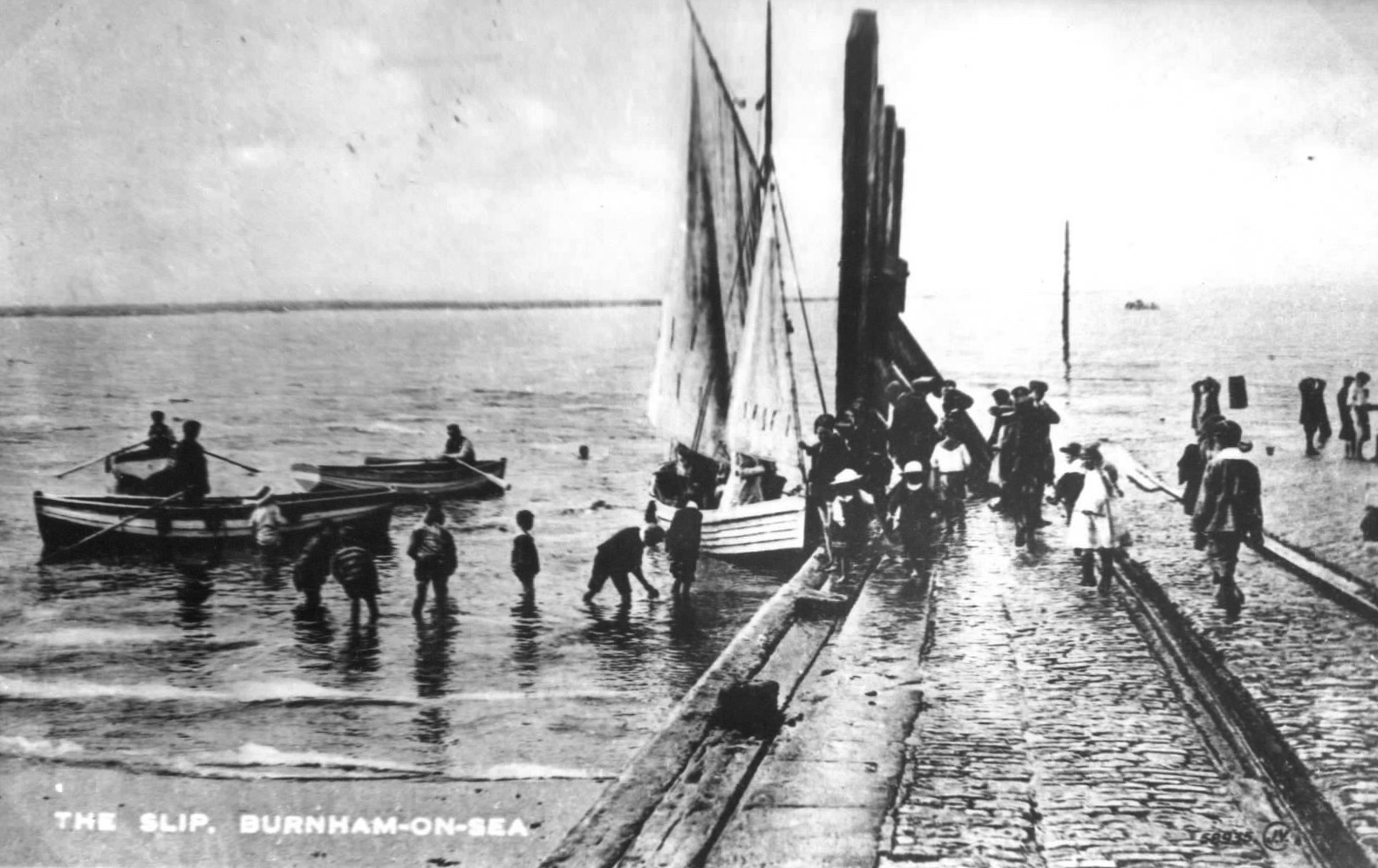
Some fairly large vessels were launched from the jetty at times:
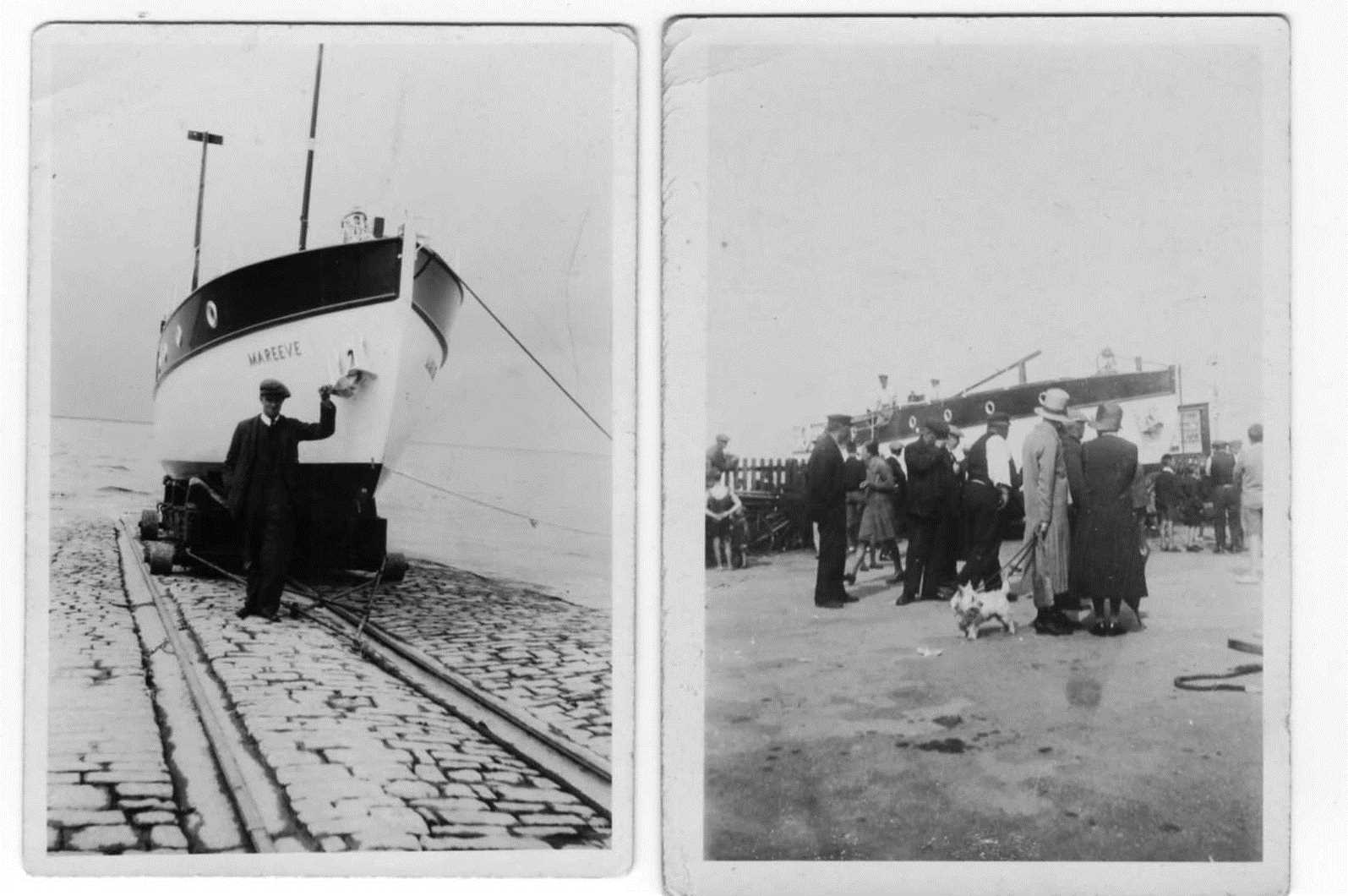
Talking to Ivor Punnet of the Burnham & Highbridge Weekly News in 1991 84 year old Stan Wynn recalled “When the fishing boats came in to the jetty I used to go down and buy a pennyworth of sprats for our supper. Then one day the price went up to tuppence and mother refused to buy any more because she said they were too dear.”
Below: jetty scenes over the years:
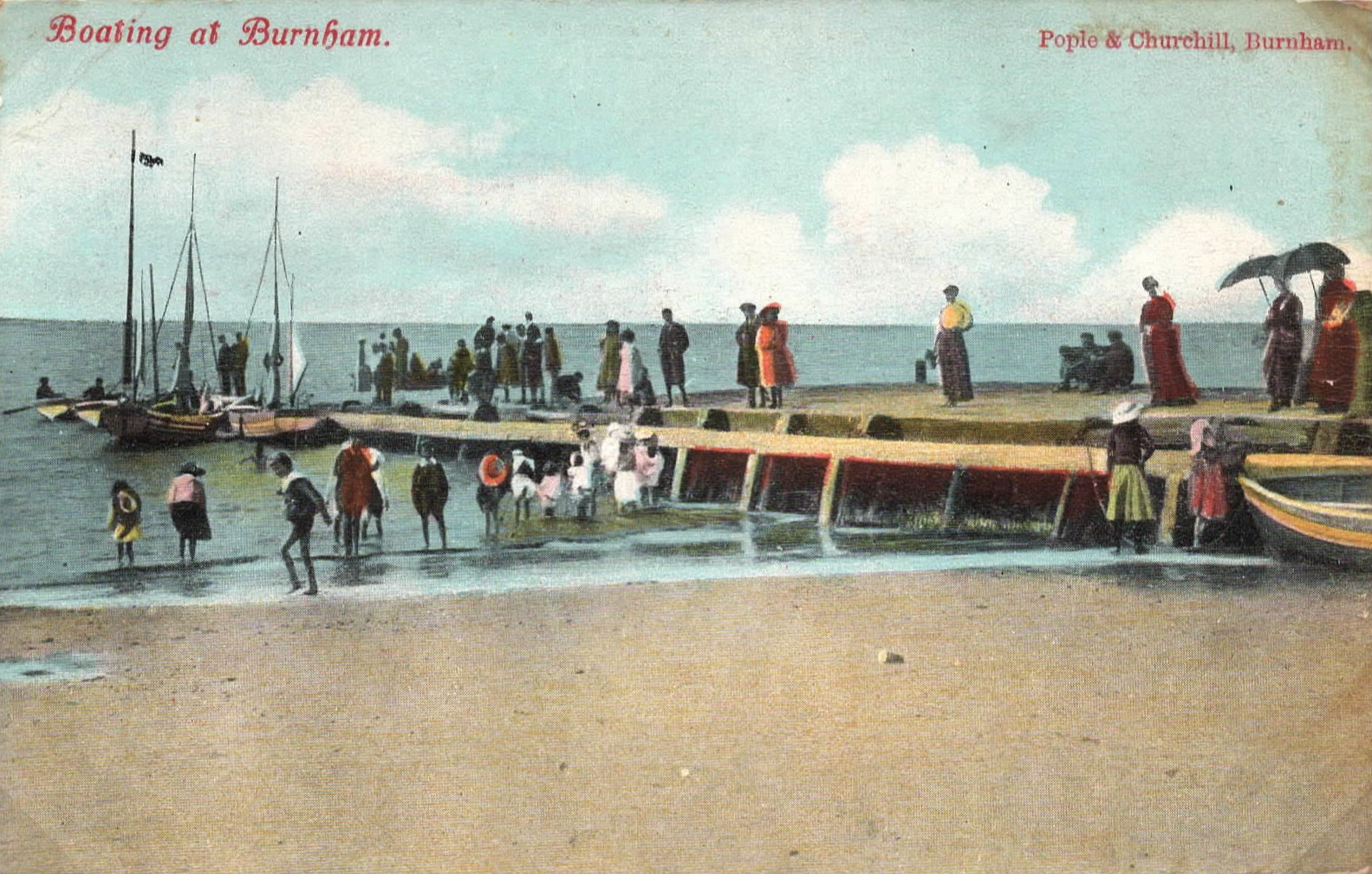
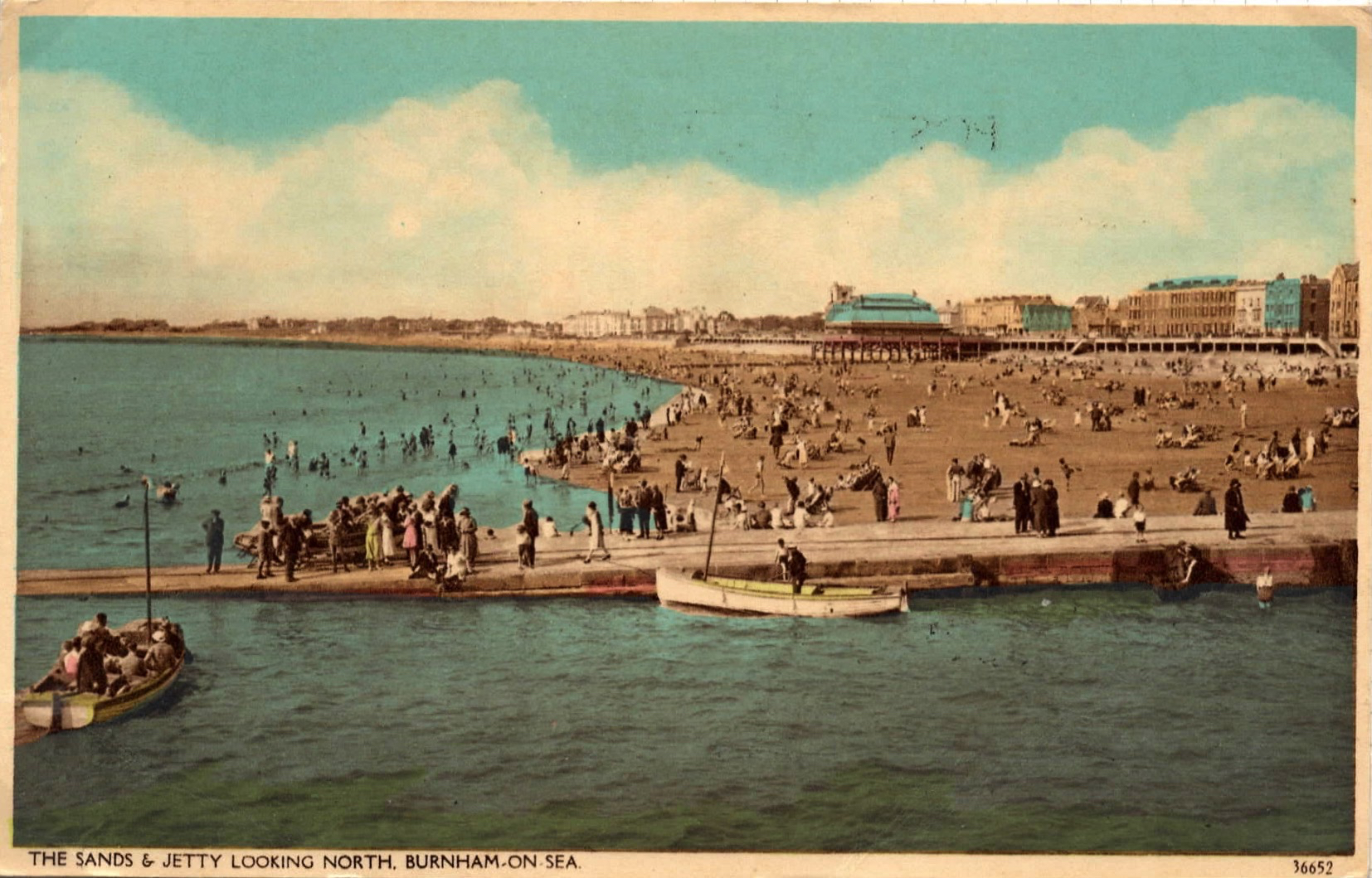
On more than one occasion the jetty became unsafe and had to be repaired. Below is a surviving sign from one such occasion in December 1912.
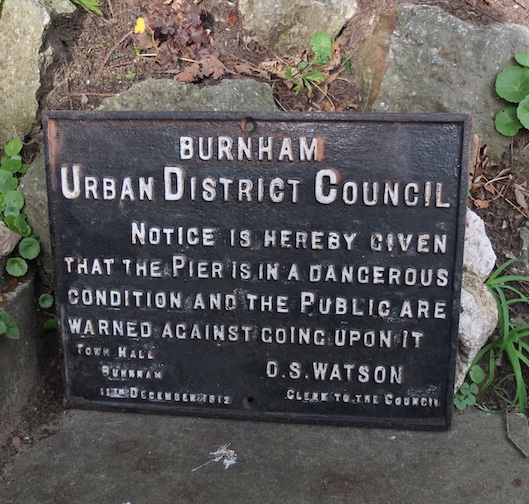
In 1967 repairs were needed after a lorry fell through the planks
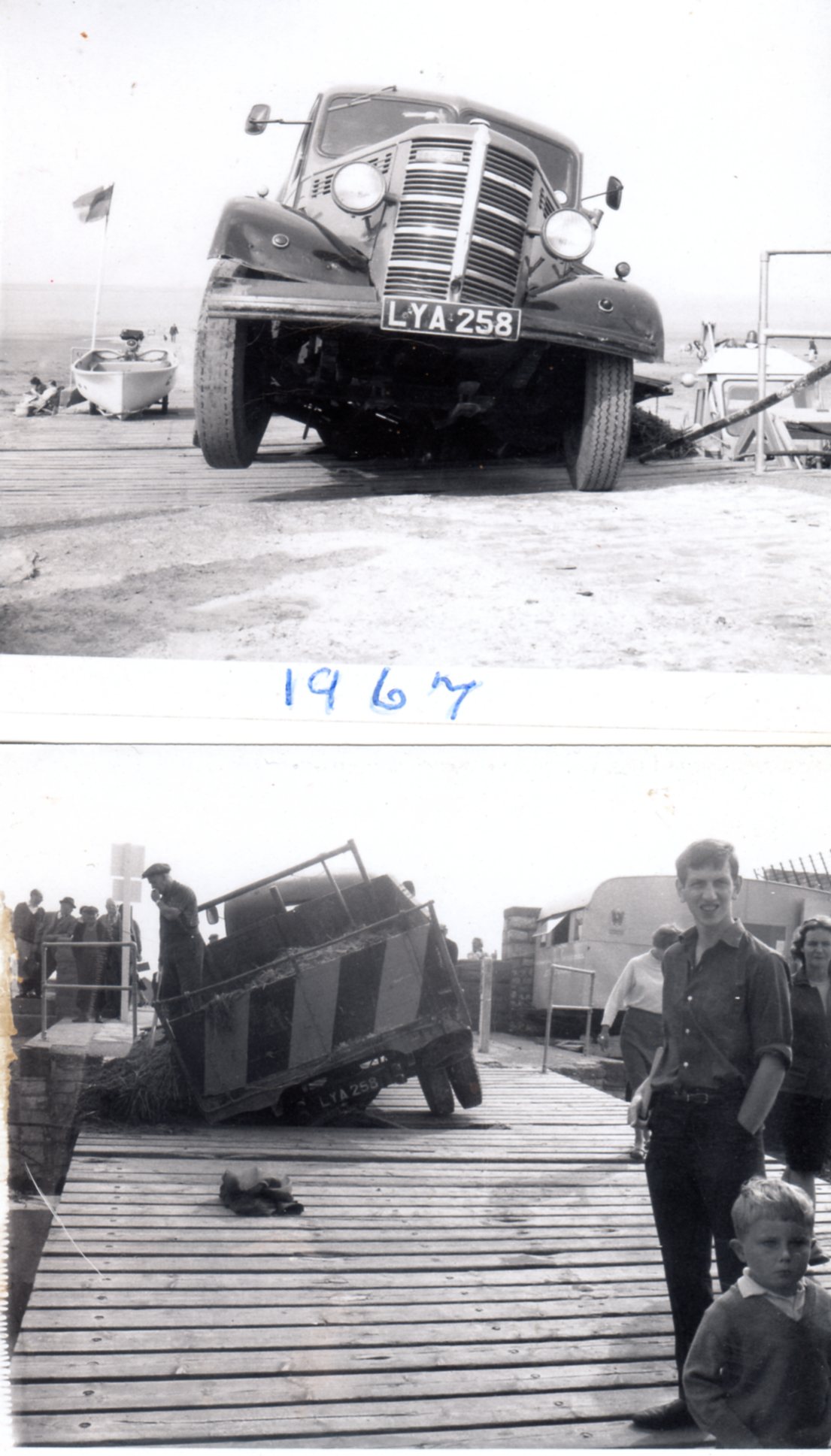
The jetty was altered in the 1980’s by the removal of the rails and the cobbled surface and a slight levelling of the slope. It was originally some 275m long, but a 9m long section at the seaward (west) end was removed.
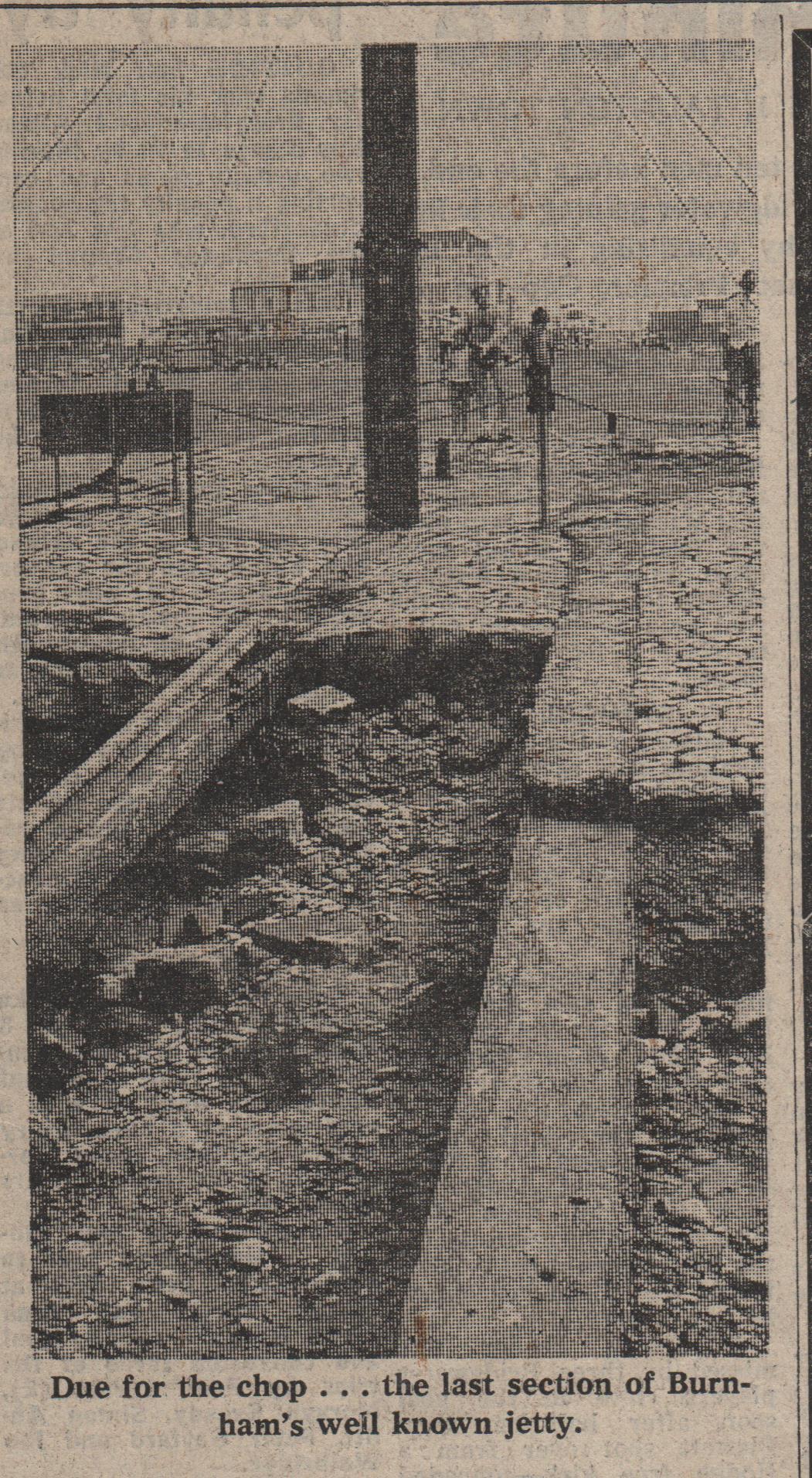
Follow this link for more information about shipping.

